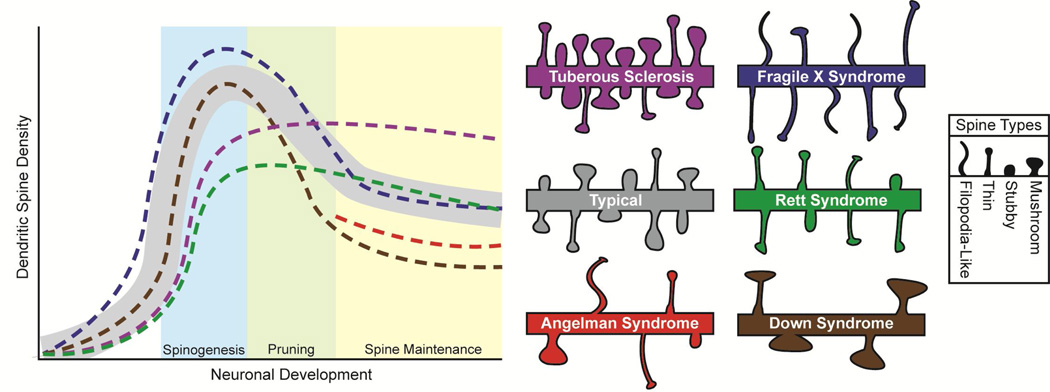FMRP
2022-11-19:
FMRP/FMR1 (Fragile X messenger ribonucleoprotein) #
-

- Astrocyte FMRP plays an important role in shaping the neuron morphology and synaptic protein profiles. It inhibits excess protein synthesis, leading to increased branching and thus the abundance of immature spines (so maybe not necessarily ‘over-mature’ ones)
- Indeed it is synthesized in neurons, meaning both Gp1 mGluR are implicated. Is the transcription it not just calcium influx regulated? What’s special about mGluR?
-
Roles of Calcium-Stimulated Adenylyl Cyclase and Calmodulin-Dependent Protein Kinase IV in the Regulation of FMRP by Group I Metabotropic Glutamate Receptors (2008) this is in the ACC.
- Ca2+->CaM->AC->PKA->CAMK IV->CREB->Fmr1.
- Ca2+->CaM->CREB
- Metabotropic glutamate receptors activate FMRP in the anterior cingulate cortex through calcium-dependent signaling pathways (2007)
-
FMRP Phosphorylation Reveals an Immediate-Early Signaling Pathway Triggered by Group I mGluR and Mediated by PP2A
- Rapid mGluR1 (<1 min) -> PP2A -> rapid dephosphorylation.
- Extended mGluR activation (1-5 mins) -> mTOR inhibiting PP2A, facilitating FMRP rephosphorylation.
-
Roles of Calcium-Stimulated Adenylyl Cyclase and Calmodulin-Dependent Protein Kinase IV in the Regulation of FMRP by Group I Metabotropic Glutamate Receptors (2008) this is in the ACC.
- Fragile Xsyndrome is the second most common form of mental retardation, second only to down syndrome overall.
- Gq-dependent:
The mGluR theory of fragile X mental retardation (Gp1 = postsynaptic group 1, aka mGluR1/mGluR5.)
- FMRP is synthesized in response to mGluR5 activation. When mGluR5 upregulated (it has beentheorized that could be the case in Autism, at least in some areas. Might be more to do with sAPPα) or FMR1 is knocked out (FXS) then FMRP-mediated translation repression is overshadowed/prevented, and results in protein synthesis-dependent LTD:

- Increased synapse loss and/or turnover, both requiring mRNA translation, and if exaggerated could account for the delay in synaptic maturation and elongated spines, i.e.:

- Increased synapse loss and/or turnover, both requiring mRNA translation, and if exaggerated could account for the delay in synaptic maturation and elongated spines, i.e.:
- I am a bit confused. mGluR is just like anything else; transient activation is LTP, but prolonged agonism is LTD? They’re being weird about it.
- Just makes me wonder what these proteins are that are upregulated?? This has been hard to investigate apparently.
- What’s so special about mGluR1/5? What about other modes of Ca2+ influx?
- FMRP is synthesized in response to mGluR5 activation. When mGluR5 upregulated (it has beentheorized that could be the case in Autism, at least in some areas. Might be more to do with sAPPα) or FMR1 is knocked out (FXS) then FMRP-mediated translation repression is overshadowed/prevented, and results in protein synthesis-dependent LTD: